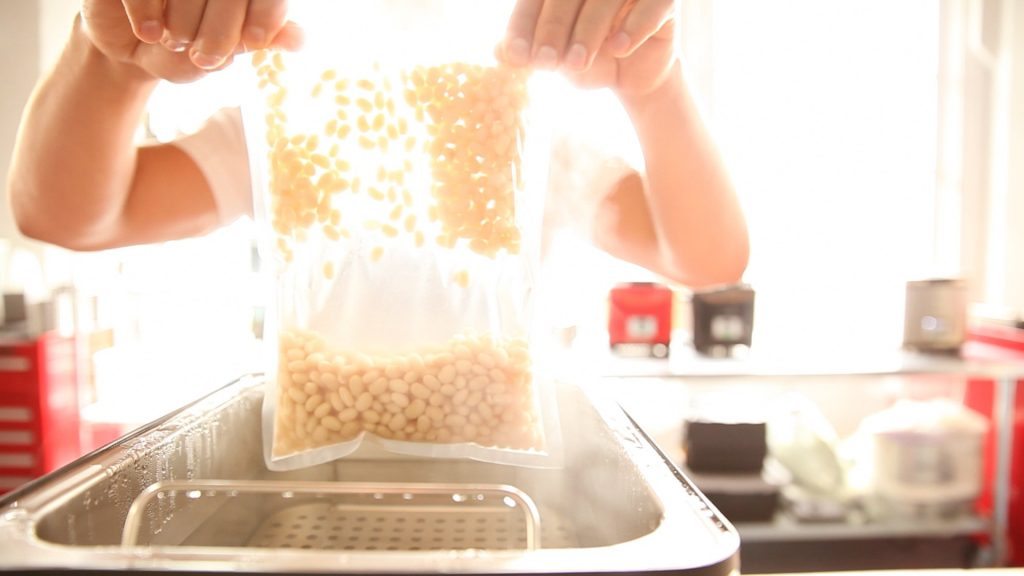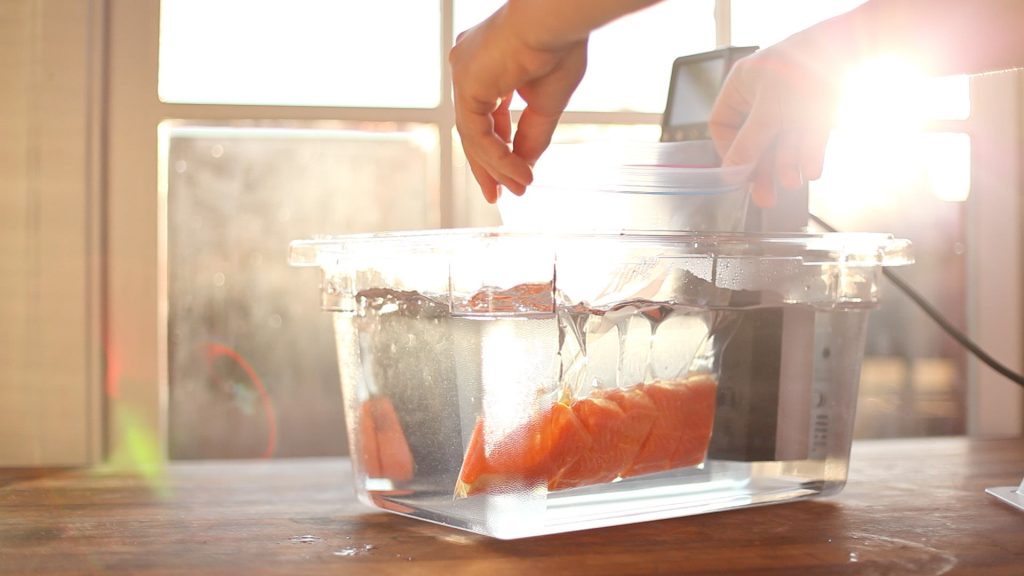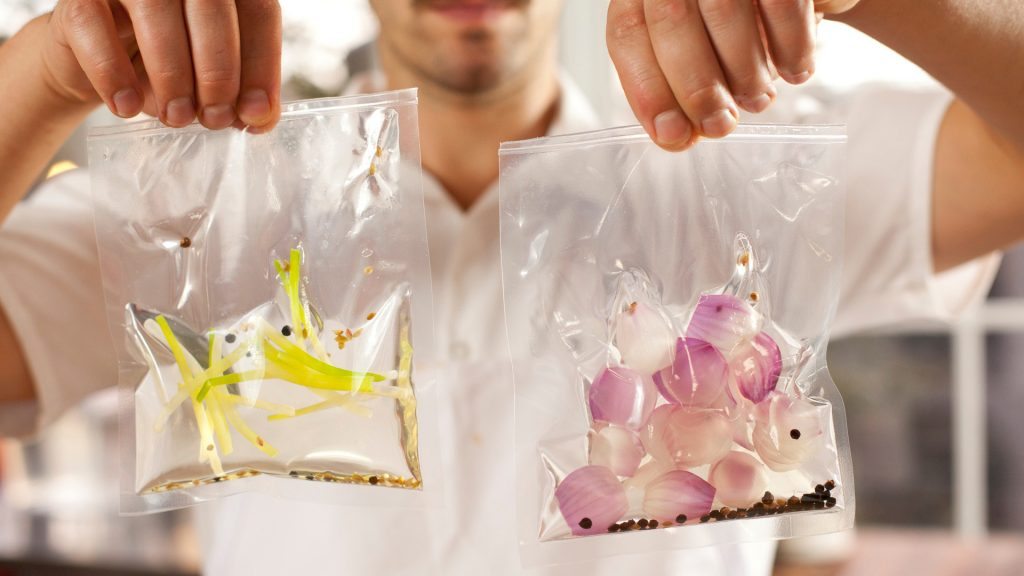By Vicki Matranga, Design Programs + Services
Lifting the Lid on a New Cooking Product Category

Occasionally a new product concept bursts on the scene and rockets to success. At other times we are unaware of a new product category simmering on the back burner. Compelling new products respond to varied trends to satisfy the needs of a wide public or a narrow one. Many products, such as the food processor or the microwave oven, took years to capture significant household penetration. A combination of factors contributed to their eventual acceptance as kitchen basics: TV chef Julia Child educated millions of viewers and propelled the food processor to fame; specialized cookware and grocery store-available food products put a microwave in every home. Similar developments are now happening with sous vide products. We’ve invited Christoph Milz, a consultant in the fields of new product forecasting and development of cooking equipment to outline the latest.
A native of Germany, Christoph has lived in the U.S. since 2005. He worked for Siemens in medical molecular imaging technology and then applied that experience to the culinary world. A chef by training, he blends business, science and design and advises inventors and household appliance manufacturers on future kitchen products. He worked with Chicago-based PolyScience for several years in the marketing of their sous vide equipment. His path from molecular imaging to modernist cooking moved him to form Contemplate-Consulting, a firm that offers strategic marketing, product innovation and culinary education http://www.contemplate-consulting.com/ and to collaborate with the founders of ChefSteps, a new online cooking school. http://www.chefsteps.com/
Christoph, what is sous vide?
“Sous vide” is a French term that means “under vacuum,” an innovative cooking technique in which food is vacuum sealed and slow-cooked in water at precise temperatures until it’s perfectly cooked without the need to time it exactly. The sous vide method is a modern and convenient way to produce consistent texture and flavor while maintaining the nutritional integrity of the food.
The general idea is that food is enclosed in a plastic pouch that is submerged in a water bath held at a constant and precisely controlled temperature. While wrapping food in a pouch to prevent moisture loss and cooking at a gentle temperature is not new, the novelty with this technique is the measure of temperature control, the convenience and repeatability. Someone with little cooking experience can create a perfectly cooked steak or reheat foods without the fear of overcooking.
How has the field developed?
In the past three years sous vide has been embraced by a small but growing number of food enthusiasts. However, despite the great advantages and convenience this method offers the number of people who know what sous vide cooking stands for is still a very small fraction. It’s safe to say that sous vide equipment had not had yet its great breakthrough in the home kitchen. The main reasons for this moderate growth were the price points for an entry level set of equipment ($500 to $1,000), the rather limited availability of recipes and instructions for the casual home chef, and it being labeled by the media with “molecular cuisine.” After more than three years of steady increase in equipment sales, there is no dispute anymore IF sous vide will be part of most households; the question has shifted to HOW FAST it will grow. As the first quarter of 2013 has shown, new introductions will likely power accelerated growth of this category.
Tell us what you see as the key drivers in this category.
1. Equipment & Price
Since late 2009, the choice for home chefs was between two manufacturers and types of systems. At the 2013 International Home + Housewares Show, we saw at least four exhibitors that presented sous vide equipment (of which two were new introductions) and a good range of different models and price points. Throughout the year we are likely to see more market entries or models. The advertised prices of new models are now aiming lower, closer to $299 or lower. This will meet the demand of many enthusiasts who were not able to buy purchase an immersion circulator for $799. The new PolyScience model decreased beginning this year by 40 percent and a kit including a vacuum sealer dropped in price by 30 percent.
2. Education & Training Material
In the past, the challenge for manufacturers and retailers has been how to provide enough and appropriate educational content. With ChefSteps, a new free-to-learn cooking school that launched at the end of 2012, an engaging online course on sous vide cooking is available. It teaches tricks for various approaches and provides a lively online forum where every question is answered in an encouraging and friendly way. Chris Young, one of ChefSteps founders, reports that 60 percent of the site’s audience is composed of food enthusiasts who want to learn how to cook sous vide at home.
3. Mainstream adaptations in the commercial market
For professional chefs, sous vide has proven that it isn’t a passing fad. It established itself as a cooking technique just like broiling, poaching, baking etc. It started out in selected high-end restaurants, but now can be found in countless and different types of restaurants that use sous vide for its culinary, economic and food safety benefits. Many of them even state that a high percentage of their menus depend on it. As culinary schools incorporated the teaching of sous vide cooking into their courses in recent years, most graduates from now on will count it as one more technique in their professional skills set. This will increase the number of restaurants and chefs educating and presenting sous vide to their guests.
4. Prepared foods available in grocery stores
As with microwaves, once packaged foods could be purchased in a bag or a box, families used their microwave ovens more often and with tastier results. The same is happening with sous vide. Cuisine Solutions, a food service company that is a major provider to restaurants, military installations, hotels, convention centers and healthcare facilities, now offers its products at Costco, BJ’s, Wegman’s and Whole Foods. Other companies will follow. Just as packaged bake mixes and frozen doughs brought easy baking to the family kitchen, sous vide products will allow people to have restaurant-quality meals after a long day at work.
Thank you, Christoph, for pointing out key trends to follow.
What about energy use and specialty equipment?
Critics of the method generally point out extreme examples, like cooking something for 50 hours. In fact, sous vide uses little energy, because little electricity is required to keep boiling water at a constant temperature. Sous vide is very efficient and uses about the same amount of power as an electric slow cooker appliance. Most items can be cooked sous vide in 20-40 minutes. Proper vacuum sealing and correct plastic pouches are important to assure food safety. This method takes some training as does any other cooking technique.
Christoph, you have studied the demographics of sous vide users. Tell us about this group and your research.
This is a fascinating phenomenon. First of all, I distinguish between “foodies” and “food enthusiasts.” Foodies take pictures of their plates in a restaurant to post the photos on Facebook. Food enthusiasts spend hours in their home kitchens experimenting to create recipes and replicate what they savored in a restaurant. We’ve seen a growing number of men enjoying cooking at home; they have particular tastes in quality equipment and want specialty tools, or are drawn to a DIY approach in building their own sous vide equipment. Most sous vide users are male and love science. They are often engineers or work in IT. Several years ago, I had a sense of what was happening but I didn’t have proof. Now with social media and purchase data analysis we can see that most current sous vide fans are 20 to 55-year-old men with higher education and income. New traffic analysis methods allow us to gather more information. The www.ChefSteps.com chat forums reveal a lot about what people are thinking and what they want from equipment.
Three sous vide products recently launched on Kickstarter are also interesting stories. One sous vide product was created by IT students at Cambridge University in the U.K., another was invented by engineering students at University of California at Berkeley and the third was created by a former IT specialist at Microsoft collaborating with friend who is working on his Ph.D. in physics. These products still need refinement, but such events demonstrate the buzz of the sous vide category and will certainly attract major companies and investors.
Any other predictions you’d like to add?
I believe we will see major manufacturers of appliances develop products that will incorporate a sous vide cooker into a kitchen’s configuration, much as we have seen steamers, microwaves and convection ovens built in or accompanying a conventional range or oven. Also we will see continued refinements in free-standing devices such as those now on the market, more consumer education and more varied packaged foods available in grocery stores for home use.
Thank you, Christoph Milz, for this informative view of an emerging product category and your perspective on what’s cooking at home. Learn more about the sous vide method by visiting
http://www.chefsteps.com/courses/accelerated-sous-vide-cooking-course
credit photos to ChefSteps.com





